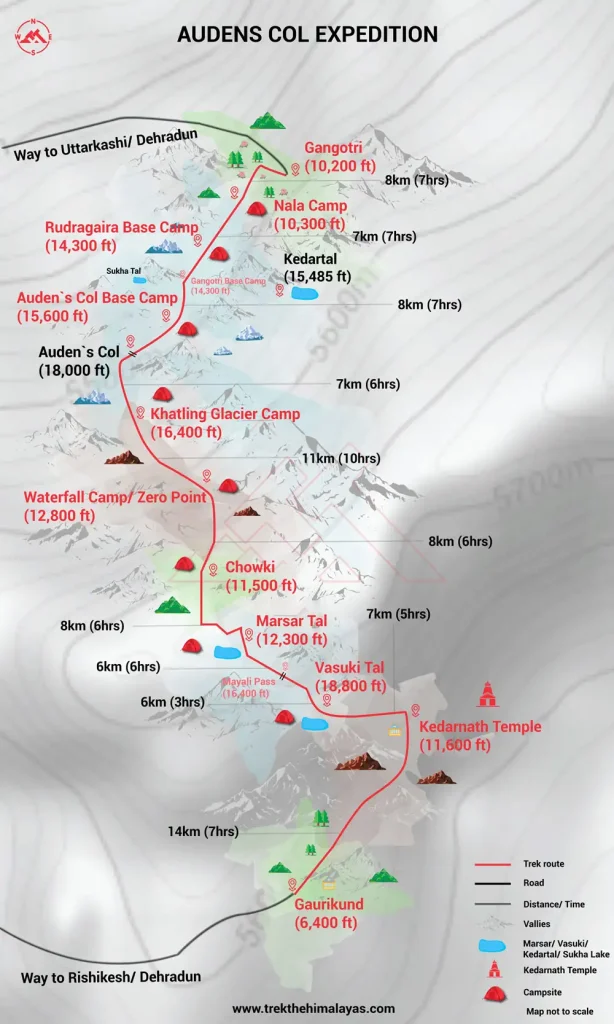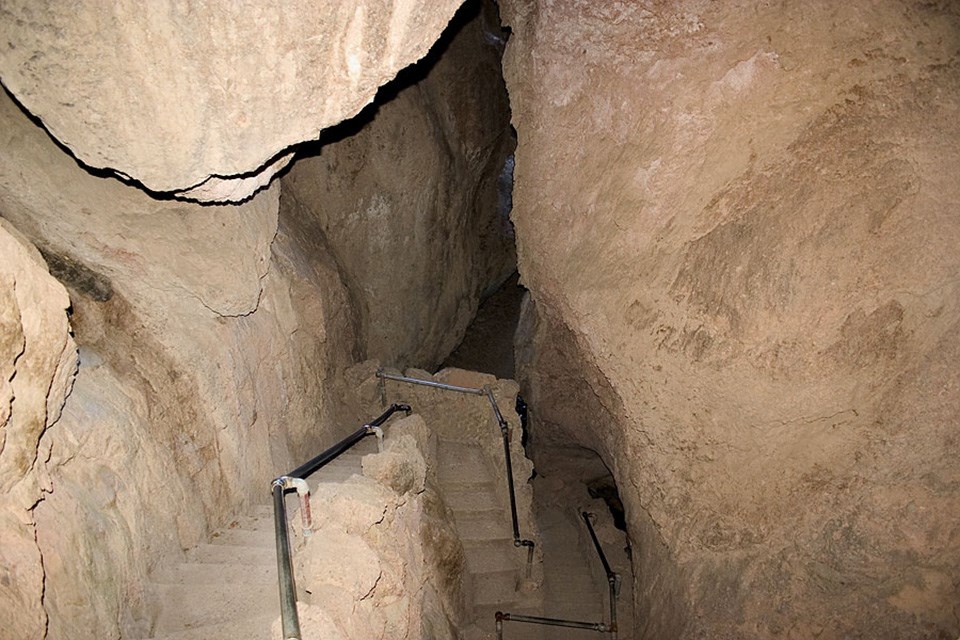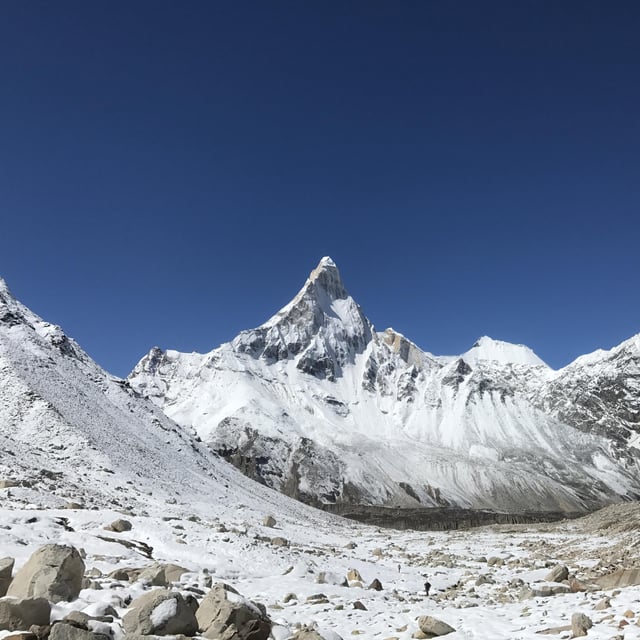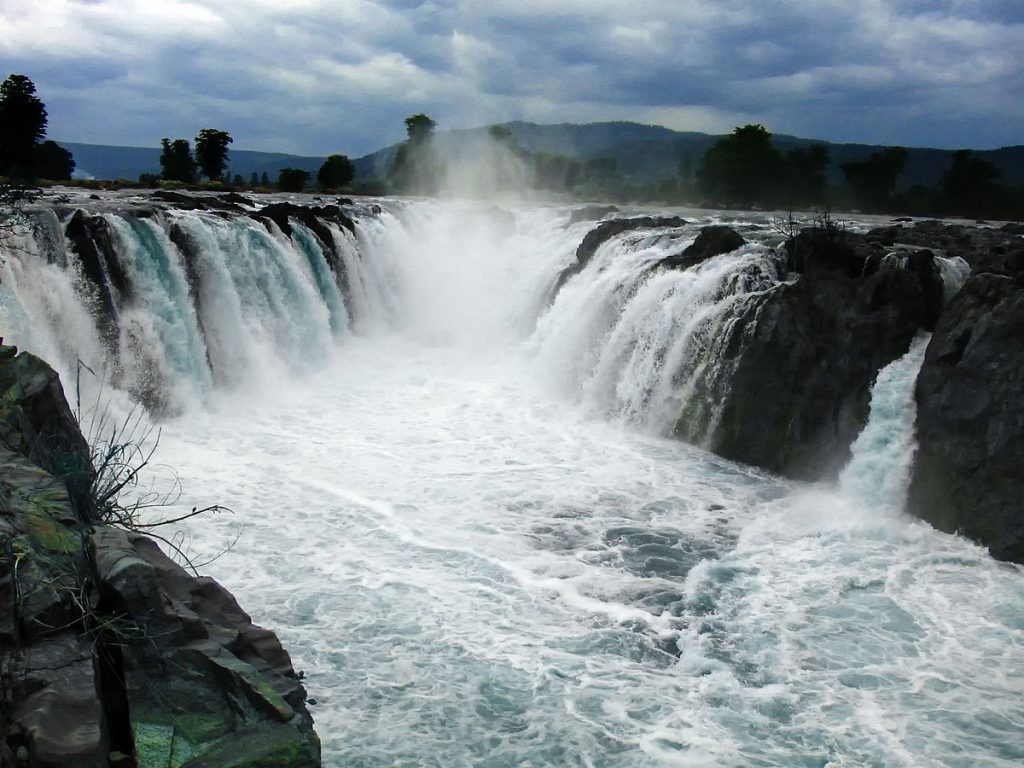Caves are fascinating natural formations found all over the world. They hold secrets of history, geology, and nature.
Exploring caves offers a unique glimpse into our planet’s past. These underground wonders can range from small, hidden chambers to vast networks stretching for miles. People have used caves for shelter, rituals, and exploration for centuries. Today, they attract adventurers, scientists, and tourists alike.
Caves are home to unique ecosystems and stunning geological formations like stalactites and stalagmites. Whether you’re interested in spelunking or just curious about these mysterious places, caves provide an intriguing adventure. This blog will dive into the wonder of caves and why they captivate so many.

Credit: www.nationalgeographic.com
Formation Of Caves
Exploring caves can be an exhilarating adventure, revealing secrets of the earth’s underground world. But have you ever wondered how these fascinating structures are formed? The formation of caves is a complex process involving various geological phenomena. Let’s delve into the specifics of how caves come to be.
Geological Processes
Caves are primarily formed through geological processes that take thousands or even millions of years. One of the most common processes is the dissolution of soluble rocks such as limestone, dolomite, and gypsum. Rainwater, which is slightly acidic, seeps into cracks and crevices in these rocks, gradually dissolving them and creating hollow spaces.
Another significant geological process is volcanic activity. Lava tubes, a type of cave, are formed when lava flows from a volcanic eruption and cools on the surface while continuing to flow underneath. This creates a tunnel-like structure that can extend for miles.
Then there is mechanical erosion, where water, wind, or ice physically wears away rock to carve out cave systems. Think about how rivers carve out valleys; similarly, they can erode underground rock to form caves.
Types Of Caves
Understanding the different types of caves can make your exploration even more fascinating. Here are a few common types:
- Solutional Caves: These are formed through the dissolution of soluble rocks. The famous Carlsbad Caverns in New Mexico are a prime example.
- Lava Tubes: Created by volcanic activity, these caves can be found in regions with historical volcanic eruptions, like the Thurston Lava Tube in Hawaii.
- Sea Caves: Formed by the constant pounding of waves against coastal cliffs. The Blue Grotto in Italy is a stunning example.
- Glacial Caves: These are formed by melting ice within glaciers. Exploring these icy wonders can be a surreal experience.
Did you know there are even artificial caves created by humans? While not naturally formed, they can be just as intriguing to explore.
So, next time you enter a cave, pause and consider the extraordinary geological processes and the type of cave you are exploring. How does knowing the formation of caves change your perspective on these natural wonders?
Whether you’re an avid spelunker or a casual explorer, understanding the formation of caves adds a layer of appreciation to your adventures. And who knows, maybe you’ll discover a hidden gem that tells a unique geological story.
Famous Caves Around The World
Exploring caves gives you a glimpse into the Earth’s hidden wonders. Each cave tells a unique story, shaped over millions of years. Whether it’s the sheer size, historical significance, or natural beauty, these famous caves around the world are sure to leave you in awe.
Mammoth Cave
Located in Kentucky, USA, Mammoth Cave is the world’s longest cave system. It stretches over 400 miles, offering endless opportunities for exploration. The cave’s vast network of tunnels and chambers is truly a sight to behold.
Walking through Mammoth Cave, you’ll encounter stunning formations like the Grand Avenue and Frozen Niagara. The cave also holds historical significance, with ancient artifacts and evidence of prehistoric human activity.
Have you ever wondered what it feels like to step into a seemingly endless underground world? Mammoth Cave provides that experience. It’s a reminder of nature’s incredible power and the mysteries still waiting to be discovered.
Waitomo Glowworm Caves
New Zealand’s Waitomo Glowworm Caves offer a magical experience unlike any other. These caves are home to thousands of glowworms that light up the dark cave walls, creating a mesmerizing spectacle.
As you glide through the caves on a boat, you’ll feel like you’re floating under a starry sky. The glowworms emit a natural light, which they use to attract prey. This natural wonder is both beautiful and functional.
Imagine the surreal feeling of being surrounded by tiny, glowing lights in complete darkness. It’s an experience that stays with you long after you leave. The Waitomo Glowworm Caves are a testament to the wonders of the natural world.
Have you visited any of these famous caves? Share your experiences and let us know if there are other caves that have left you spellbound. Exploring these natural wonders can be a transformative experience, offering a deeper appreciation for the Earth’s hidden treasures. So, which cave will you explore next?
Unique Cave Ecosystems
Caves are mysterious and fascinating. They hide ecosystems unlike any other place on Earth. These unique cave ecosystems support life forms that are rarely seen. Some creatures and plants have adapted to live in these dark, isolated environments. This makes caves a treasure trove of biodiversity. Let’s explore these unique cave ecosystems further.
Flora And Fauna
Inside caves, you can find diverse flora and fauna. Many plants and animals live in these dark places. Certain fungi thrive in the moist, low-light conditions. These fungi break down organic matter, providing nutrients for other organisms.
Animals in caves range from tiny insects to larger mammals. Bats are common cave residents. They use caves for shelter and breeding. Other animals include cave crickets, spiders, and fish. Many of these creatures have unique features suited to the cave life.
Adaptations To Darkness
Life in caves often means living without light. Many cave dwellers have adapted to this darkness. Some animals have lost their eyesight. They rely on other senses to navigate and find food. For example, cave fish and salamanders often have no eyes. Instead, they use their sense of touch and smell.
Other adaptations include heightened senses and specialized feeding habits. Bats use echolocation to hunt insects in complete darkness. Cave crickets have long antennae to feel their way around. These adaptations help them survive in an environment with no light.

Credit: www.nationalgeographic.com
Human History And Caves
Caves have sheltered humans for thousands of years. They provided safety, warmth, and a place to create art. These natural formations tell stories of our ancestors’ daily lives.
Caves have been a part of human history for thousands of years. These natural formations have served as shelters, sacred places, and even canvases for early artists. Understanding the role of caves in human history can reveal fascinating insights into our ancestors’ lives and how we continue to use these spaces today.Ancient Art And Inhabitants
Caves were more than just shelters for our ancestors. They were homes and places of worship. Imagine the awe of discovering ancient cave paintings. These artworks, such as those in Lascaux, France, showcase the creativity and daily life of prehistoric humans. You might wonder what drove early humans to create art deep within these dark spaces. Was it a form of expression, or perhaps a way to communicate with others? The reasons may vary, but the result is a captivating glimpse into the past. People also lived in caves. They provided natural protection from predators and harsh weather. Some caves even show evidence of long-term habitation, with areas designated for sleeping, cooking, and socializing. This gives us a clearer picture of how our ancestors adapted to their environment.Modern Uses
Today, caves still capture our imagination. They serve various modern purposes, from scientific research to adventurous recreation. Caves are valuable to scientists. They study the unique ecosystems and geological formations within them. These studies can lead to discoveries about climate change, ancient life forms, and even new species. Cave exploration, or spelunking, is a popular activity for those seeking adventure. Imagine the thrill of navigating through narrow passages and discovering hidden chambers. It’s an experience that combines physical challenge with the excitement of the unknown. Caves also have practical uses. Some are used for aging cheese and wine, taking advantage of their stable temperatures. Others serve as natural storage spaces or even locations for unique events. So next time you think about caves, consider their rich history and diverse modern uses. Have you ever explored a cave? What did you find most fascinating about it?Cave Exploration
Caves offer a thrilling adventure into the earth’s hidden chambers. Exploring these natural wonders reveals stunning formations and ancient secrets.
Cave Exploration Cave exploration, also known as spelunking, is an exhilarating adventure that takes you deep into the earth’s hidden chambers. Whether you’re crawling through tight passages, discovering underground rivers, or marveling at ancient stalactites and stalagmites, caves offer a unique way to connect with nature. However, this adventure requires knowledge and preparation to ensure both enjoyment and safety.Speleology
Speleology is the scientific study of caves. This field helps us understand the formation, structure, and ecosystems within caves. Experts in speleology, known as speleologists, conduct research to uncover the secrets of these underground worlds. They study everything from mineral deposits and rock formations to the unique species that inhabit the dark. Understanding speleology can enrich your cave exploration experience. Knowing why certain formations exist or how caves have evolved over millions of years adds depth to your adventure.Safety Precautions
Safety should be your top priority when exploring caves. Here are some essential precautions to keep in mind:- Never Go Alone: Always explore with at least one other person. Caves can be unpredictable, and having a companion can be crucial in case of emergencies.
- Inform Someone: Let someone outside your group know your plans, including the cave you are visiting and your expected return time.
- Wear Proper Gear: A helmet with a headlamp is a must. Wear sturdy boots and appropriate clothing to protect yourself from sharp rocks and cold temperatures.
- Carry Multiple Light Sources: The darkness in caves is absolute. Always carry extra batteries and backup light sources.
- Stay Hydrated and Nourished: Bring enough water and snacks. Caves can be physically demanding, and you need to maintain your energy levels.
- Know Your Limits: It’s easy to get caught up in the excitement, but always be aware of your physical limits. If you feel uncomfortable or unsafe, it’s okay to turn back.
Impact Of Climate Change On Caves
Climate change affects caves, altering their temperature and humidity levels. These changes impact delicate ecosystems and ancient formations inside.
### Impact of Climate Change on Caves Caves are mysterious wonders of nature. They offer a glimpse into our planet’s past, but they are more than just beautiful formations. Caves are delicate ecosystems that are now facing significant threats from climate change. The impact of climate change on caves is an important topic that deserves your attention. Let’s delve into the specific ways climate change affects these underground worlds and what is being done to preserve them.Effects On Ecosystems
Climate change is altering the ecosystems within caves. These changes have far-reaching consequences. Rising temperatures can disrupt the delicate balance of these ecosystems. Higher temperatures can change the humidity levels inside caves, which can be detrimental to the unique species that live there. Many cave-dwelling creatures have adapted to stable conditions over thousands of years. A sudden change can be catastrophic. For example, bats, which play a crucial role in controlling insect populations, are sensitive to temperature changes. Warmer temperatures can affect their hibernation patterns, leading to increased mortality rates. Moreover, the water that drips into caves, forming stalactites and stalagmites, is also affected. Changes in rainfall patterns can reduce the amount of water entering caves, halting the growth of these formations and altering the cave’s appearance. These effects on ecosystems highlight the need for urgent action to mitigate climate change and protect these natural treasures.Preservation Efforts
Many organizations and scientists are working tirelessly to protect caves from the impacts of climate change. One effective method is monitoring cave environments. By installing sensors, scientists can track changes in temperature, humidity, and CO2 levels. This data helps in understanding how climate change is affecting caves and developing strategies to combat these changes. Additionally, reducing human impact is crucial. You can help by following guidelines when visiting caves. Stick to designated paths to avoid disturbing delicate formations and ecosystems. Restoration projects are also underway in many parts of the world. These projects aim to repair damage caused by climate change and human activity. For instance, in some caves, artificial stalactites are being introduced to replace those lost due to environmental changes. You can contribute to these efforts by supporting organizations dedicated to cave conservation. Your involvement can make a significant difference. Are there caves near you that are being affected by climate change? Consider reaching out to local conservation groups and see how you can help. — Caves are more than just tourist attractions. They are irreplaceable ecosystems that need our protection. By understanding the impact of climate change on caves and getting involved in preservation efforts, you can play a part in safeguarding these natural wonders for future generations.Caves In Mythology And Literature
Caves have always fascinated humans. They appear in countless stories and legends. From ancient myths to modern literature, caves symbolize mystery and adventure. This section explores caves in mythology and literature.
Symbolism In Myths
In many myths, caves represent the unknown. They are places of transformation. Heroes often enter a cave and emerge changed. The journey within symbolizes facing fears. It also means gaining wisdom.
In Greek mythology, caves were homes to gods and monsters. The Oracle of Delphi gave prophecies from a cave. This added to the cave’s mystique. Caves also appear in Hindu myths. Lord Shiva meditated in a cave. This showed the cave as a place for spiritual growth.
Caves In Popular Culture
In modern literature, caves still hold power. J.R.R. Tolkien’s “The Hobbit” features the Lonely Mountain. Inside, a dragon guards treasure. This cave adventure thrills readers.
In “Harry Potter,” the Chamber of Secrets is a hidden cave. It contains a monster. This adds suspense and danger. Caves in these stories captivate audiences. They symbolize hidden truths and challenges.
Films also use caves to great effect. In “Indiana Jones,” caves hide ancient secrets. These scenes are full of excitement. They keep viewers on the edge of their seats.
Overall, caves in mythology and literature remain powerful symbols. They represent the unknown, transformation, and adventure. They continue to capture our imaginations.
Tourism And Conservation
Exploring caves can be an awe-inspiring adventure. However, the rise in cave tourism brings up important questions about how to preserve these natural wonders. How do we enjoy these geological marvels without causing harm? This section delves into the delicate balance between tourism and conservation, offering practical tips and insights.
Balancing Tourism And Preservation
Imagine stepping into a cave that has been untouched for centuries. Now picture the same cave, but with footpaths worn by thousands of visitors. The impact is evident, isn’t it? While tourism boosts local economies, it can also damage these fragile ecosystems. How do we balance both?
One effective way is by limiting the number of visitors. By issuing a set number of tickets, authorities can control crowd sizes. This protects the cave while ensuring a pleasant experience for tourists. Another approach involves creating guided tours. Trained guides can educate visitors about the cave’s history and its delicate formations. Education often leads to more responsible tourism.
Sustainable Practices
Implementing sustainable practices in cave tourism is not just a buzzword; it’s a necessity. You can start by being a responsible tourist yourself. Always stick to the designated pathways. Touching formations can leave oils from your skin, which can harm the cave’s natural processes.
Tour operators can also adopt sustainable practices. They can use eco-friendly lighting that doesn’t disrupt the cave’s natural environment. Composting toilets and waste management systems are other sustainable options. These measures ensure that our visits leave minimal footprints.
Have you ever thought about how the funds generated from tourism are used? Supporting caves that reinvest tourism revenue into conservation projects can make a big difference. Your entry fee could help fund research, preserve habitats, and maintain the cave’s infrastructure.
In the end, it’s all about respect. Respect for nature, for the local community, and for future generations who will want to explore these wonders just as you do. What steps will you take to ensure that the caves you visit remain pristine?

Credit: www.nps.gov
Frequently Asked Questions
What Is The Meaning Of Caves?
Caves are natural underground spaces, often formed by geological processes. They can be used for exploration, shelter, or historical study.
What Are The 7 Types Of Caves?
The 7 types of caves are solution caves, lava caves, sea caves, glacier caves, erosional caves, talus caves, and tectonic caves. Solution caves are formed by dissolving rock. Lava caves result from volcanic activity. Sea caves are carved by waves.
Glacier caves occur within ice. Erosional caves are sculpted by water. Talus caves form from fallen rocks. Tectonic caves arise from geological shifts.
What Is The Best Cave To Visit?
The best cave to visit is Carlsbad Caverns in New Mexico. It features stunning limestone formations and extensive underground chambers. Ideal for both casual tourists and spelunkers.
What Are Caves Called?
Caves are called caverns or grottoes. These natural underground spaces are often formed by the erosion of rock.
Conclusion
Exploring caves offers unique adventures and unforgettable experiences. The mystery within each cave entices the imagination. Natural formations amaze and inspire. Visiting caves brings a deeper appreciation for nature. It’s a journey worth taking. Discovering hidden wonders can be thrilling.
So, grab your gear and venture into the unknown. Caves await to share their secrets. Each expedition brings new memories and stories. Embrace the beauty and mystery of caves. Your next adventure could be just around the corner. Dive into the depths and find magic in every shadow.
{ “@context”: “https://schema.org”, “@type”: “FAQPage”, “mainEntity”: [ { “@type”: “Question”, “name”: “What is the meaning of caves?”, “acceptedAnswer”: { “@type”: “Answer”, “text”: “Caves are natural underground spaces, often formed by geological processes. They can be used for exploration, shelter, or historical study.” } } , { “@type”: “Question”, “name”: “What are the 7 types of caves?”, “acceptedAnswer”: { “@type”: “Answer”, “text”: “The 7 types of caves are solution caves, lava caves, sea caves, glacier caves, erosional caves, talus caves, and tectonic caves. Solution caves are formed by dissolving rock. Lava caves result from volcanic activity. Sea caves are carved by waves. Glacier caves occur within ice. Erosional caves are sculpted by water. Talus caves form from fallen rocks. Tectonic caves arise from geological shifts.” } } , { “@type”: “Question”, “name”: “What is the best cave to visit?”, “acceptedAnswer”: { “@type”: “Answer”, “text”: “The best cave to visit is Carlsbad Caverns in New Mexico. It features stunning limestone formations and extensive underground chambers. Ideal for both casual tourists and spelunkers.” } } , { “@type”: “Question”, “name”: “What are caves called?”, “acceptedAnswer”: { “@type”: “Answer”, “text”: “Caves are called caverns or grottoes. These natural underground spaces are often formed by the erosion of rock.” } } ] }





